REN ZELEN investigates the haunted history of Ham House, near Richmond in Surrey
Ham House near Richmond in Surrey has a reputation as one of the finest examples of a house built in England in the 17th century.
This is largely due to is Elizabeth, Duchess of Lauderdale, the unscrupulous owner from the 1650s to her death in 1698.
She inherited the house from her father who was a supporter of Charles I and managed to protect it from confiscation by striking up a close relationship with Oliver Cromwell, while secretly corresponding with Charles II and the exiled court in France.
1660 saw Charles II restored to the throne and he rewarded Elizabeth’s second husband, John Maitland, by creating him the Duke of Lauderdale.
Both the Duke and Duchess were determinedly ambitious and spent lavishly on Ham House, creating a fine house and gardens unrivalled except by royalty.
Their parties were renowned and Ham was the centre of social influence and political intrigue throughout the 1670s, but by the time the Duke died in 1681 he had fallen out of favour with the King and the Duchess spent the last 16 years of her life alone, impoverished and abandoned by her former friends.
300 years of hauntings at Ham House
For the last 300 years visitors to Ham House have claimed that it is haunted.
The dejected spirit of Elizabeth reputedly walks the house.
During some restoration work in the Chapel in 1992, workmen were amazed to discover a small handprint and marks of a long, sweeping skirt in the fine plaster dust on the seat in the Duchess’s pew.
The Chapel had been closed up since work had finished the previous evening.
Her ghost regularly patrols the stairs, her metal-heeled shoes clacking up and down between the Chapel and the old family apartments on the second floor.
Often there remains a faint scent of rose-water perfume once the footfalls have passed.
The Duchess is often heard moving about the house, and there are regular glimpses of her wearing her widow weeds – a black satin-like dress.
She usually walks in the early evening, then again late at night.
Her King Charles spaniel has also been spotted by visitors and has been heard scampering on the stairs.
It has been known to appear to jump up at visitors before disconcertingly disappearing and was even the subject of a complaint by a tourist who was annoyed that the National Trust had apparently allowed dogs inside the House!
The attic floors are closed to the public.
Icy cold in the winter and stiflingly hot in the summer, these were the servants’ bedrooms and are known to be inexplicably noisy at times.
Slamming, dragging and banging noises are often heard along with heavy footsteps and these disturbances are so common that the current National Trust staff have learned to expect and tolerate them.
There is a chilling story recorded by the artist Augustus Hare who visited the house in 1879.
He wrote: “The butler had a little girl, about 6 years old. In the small hours of the morning the child, waking up, saw an old woman scratching with her finger against the wall close to the fireplace and sat up to look at her.
“The sound caused the woman to look around and then she came to the foot of the bed and grasping the rail, stared fixedly at the child.
“So horrible was her stare that the child was frightned, screaming and hiding her face. People ran into the room and the child told them what she had seen.
“The wall was examined where the ghostly woman had been scratching and hidden papers were discovered which indicated that Elizabeth had poisoned her first husband in that very room, in order that she might marry her second.”
Smoking is forbidden in the House but the overpowering odour of pipe tobacco sometimes hangs in the air of the Marble Dining room.
Two pipes were found in the house recently, dating from the time of the Duke who was known to smoke sweet Virginia Tobacco.
A black-robed clergyman was recently spotted crossing the barrier rope and when challenged by a steward he disappeared through a servant’s door in the wall. He may possibly be Gilbert Spinks, the Duke’s chaplain who often used the servants’ passages to gain access to the Duke’s apartments.
Duchess’s bedchamber is notoriously chilling
The Duchess’s bedchamber is notoriously chilling and unwelcoming.
She slept there for 21 years during the latter part of which she was virtually confined to the room because of gout.
It was the room she died in.
Her portrait, which hangs over the fireplace has had a frightening effect on animals who have entered the room – two cats who lived in the house spat and arched their backs whenever they passed the painting.
Visitors to the room have reported feeling a ‘presence’ and often find they are reluctant to look into the beautiful silver and ebony mirror which hangs there and was used by the Duchess herself.
Loud footsteps have been heard crossing the floor followed by the slamming of the door which leads down to the Duchess’s bathroom.
She seems to take particular pleasure in creating disturbances when the house is at its quietest, and once trapped a member of staff in the office who was unwilling to leave while he could hear the Duchess crossing up and down in the corridor outside!
A tragic event in the history of the House can be verified by visitors where words scratched on a window pane on the second floor show where a young man jumped to his death in 1780.
He used a diamond in his ring to inscribe his name, John Macfarlane, in the glass before he committed suicide at only 17 years of age, apparently broken-hearted by a failed love affair.
He has been seen wandering the length of the terrace on frosty nights, seeming to search for something.
The most recent ghostly manifestation is that of the last Earl of Dysart who owned the house during the 1920s and 30s.
It was his custom to visit the cottage by the gate every Christmas Eve with presents for his chauffeur, Mr Allen, and his family.
The Earl was partially blind and walked across the cobbled courtyard tapping his stick before he arrived at the cottage door and gave it a loud knock.
After the Earl’s death in 1935 each Christmas Eve, the familiar tapping of his stick can be heard crossing the courtyard and is followed by a loud rap on the door, but alas, now there is no Earl to be seen, and more importantly, no presents!
Ham House is now managed by the National Trust and regularly offers ‘ghost tours’ giving a detailed history of the house and its many ghostly occupants.
(With all due thanks and acknowledgements to The National Trust)
REN ZELEN describes herself as “a writer, academic editor, reviewer, pop culture junkie, movie buff, rock music enthusiast, science nerd and Sandra Bullock lookalike”. Her fiction can be found on Kindle and her own website. Click here to purchase her post-apocalyptic science-fiction novel ‘The HATHOR DIARIES’. Her book/film/TV reviews can be found on various sites on the web. Information and contact on twitter @RenZelen


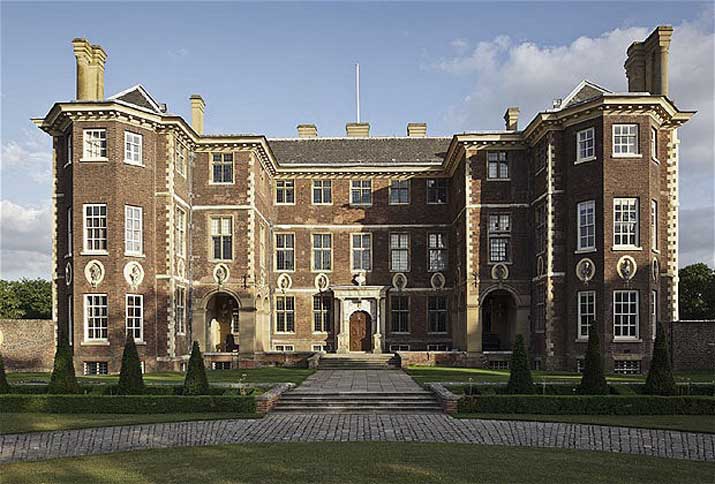
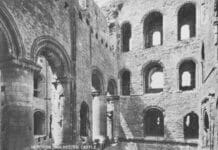
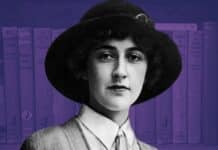
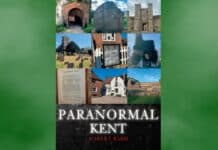


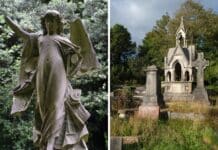
I might have a photo of Gilbert Spinks the Chaplain i took a photo in 2003 of my daughter in the cherry garden and i noticed to the left a image which resembles the Chaplain